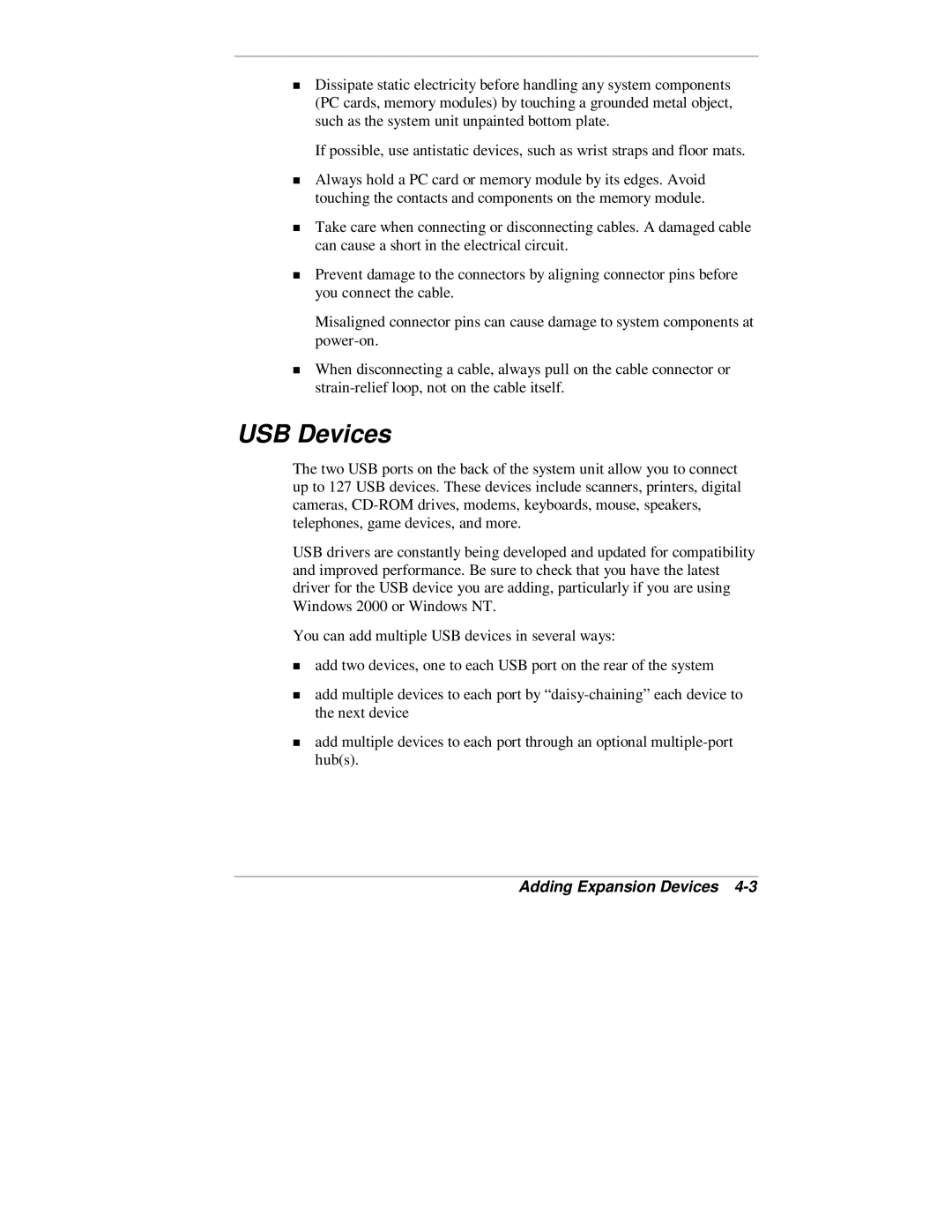
Dissipate static electricity before handling any system components (PC cards, memory modules) by touching a grounded metal object, such as the system unit unpainted bottom plate.
If possible, use antistatic devices, such as wrist straps and floor mats.
Always hold a PC card or memory module by its edges. Avoid touching the contacts and components on the memory module.
Take care when connecting or disconnecting cables. A damaged cable can cause a short in the electrical circuit.
Prevent damage to the connectors by aligning connector pins before you connect the cable.
Misaligned connector pins can cause damage to system components at
T
When disconnecting a cable, always pull on the cable connector or
USB Devices
he two USB ports on the back of the system unit allow you to connect up to 127 USB devices. These devices include scanners, printers, digital cameras,
USB drivers are constantly being developed and updated for compatibility and improved performance. Be sure to check that you have the latest driver for the USB device you are adding, particularly if you are using Windows 2000 or Windows NT.
You can add multiple USB devices in several ways:
add two devices, one to each USB port on the rear of the system
add multiple devices to each port by
Tthe next device
add multiple devices to each port through an optional
